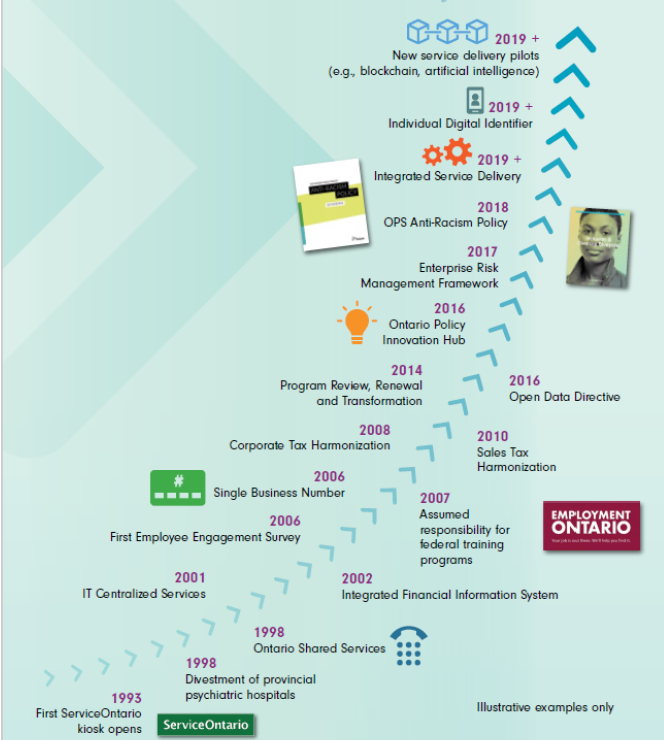The Sector Inc, makes two important assumptions to it’s approach:
1. The Speed of Digital
Of the many aforementioned issues around funding, governance, human resources, etc., which exist in the Third Sector: these traditional issues will become obsolete through technological change before they can be solved through conventional approaches given the pace of digital transformation the sector will have to soon undergo.
1. Consulting Firms Are the Required Intermediary to Facilitate
Third Sector organizations cannot transformation in isolation. As the overall fulfillment of government services depends on the efficiency of the Third Sector, it is highly likely that government (not having the internal capabilities to design and implement digital transformation), will have to collaborate with partners.
Management consulting firms are designed and structured, to provide solutions to undertakings of this magnitude. Below is Government of Ontario’s “Action Plan of the Future.”
The timeline of the plan places “integrated service delivery” from 2019 onward and as future of Third Sector organizations is to fit into this system, the pace at which external factors will force the internal digital transformation of a new organization of the sector will be rapid (Government of Ontario, 2018).


Hypothesis
If the Government of Ontario shift’s spending from consulting services in policy and program-design at the ministerial level, toward a greater proportion of spend, allocated toward management consulting services focused on digital transformation of service-delivery, at the agency and point-of-service level, it will yield a positive social return on investment.
What if “The Big Four” were Retained?
The Big Four,” collectively hold the majority of government contracts related to digital transformation with The Government of Ontario (as per a review of available data from Procurement Ontario) (Supply Chain Ontario, 2019). Collectively, they represent the critical mass of management consulting services, supply, which is available in Ontario and would need to accessed to facilitate Third Sector digital transformation, through fulfilled consulting engagements, if funded by The Province, as per the assumptions of The Sector Inc research study (Supply Chain Ontario, 2019).






